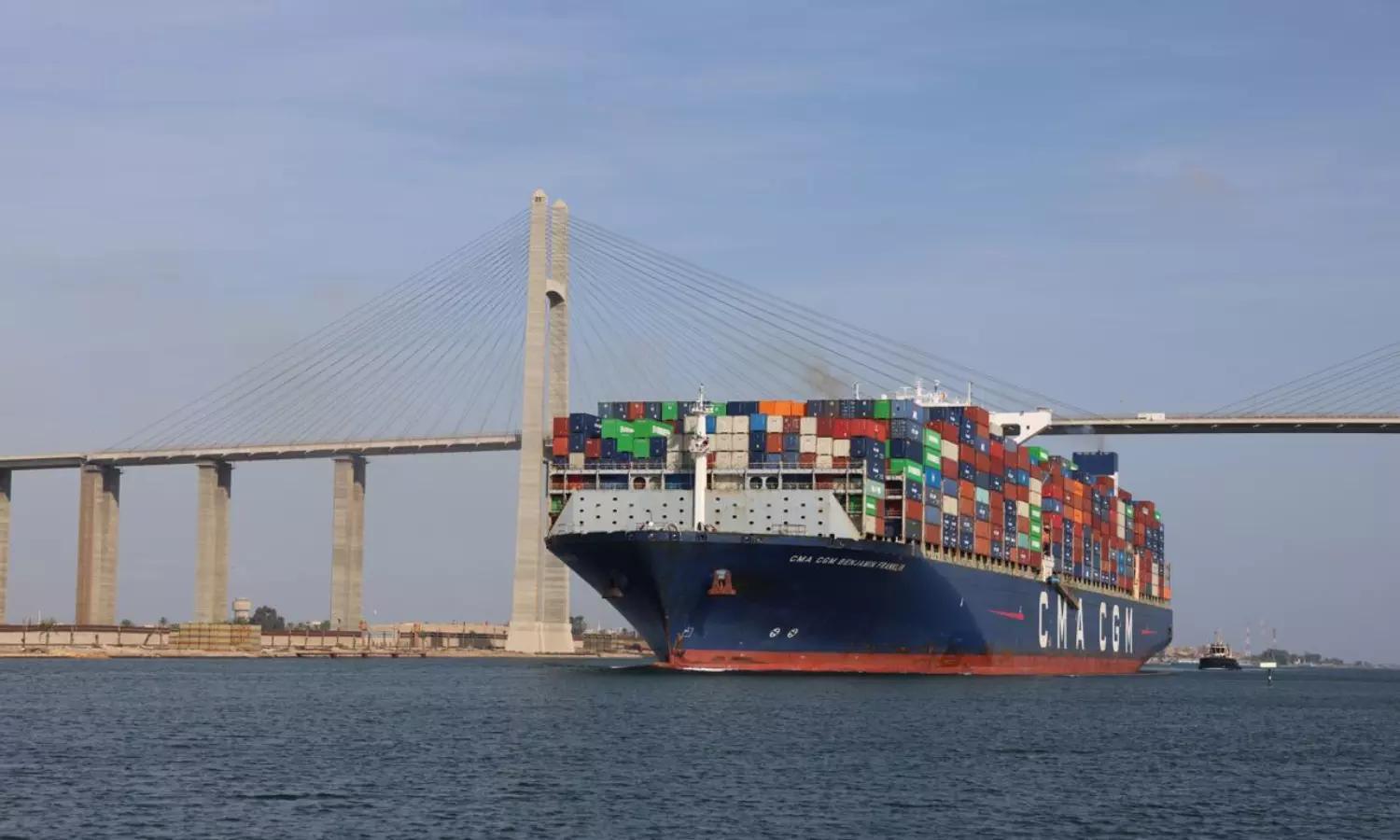Suez Canal sees strong rebound as major vessels and lines return
Improved stability and renewed confidence boost vessel traffic, supporting Africa’s key maritime trade routes.

The Suez Canal Authority (SCA) has reported a significant recovery in vessel traffic, marked by the passage of the container ship CMA CGM Benjamin Franklin, the largest vessel to cross the canal on 8th November 2025 in two years. The ship measures 399 metres in length, 54 metres in width, with a draft of 13.5 metres, and a capacity of 17,859 TEUs. Its successful transit demonstrated the canal’s full readiness to handle mega ships safely and efficiently, following months of regional instability that had slowed maritime movement through the vital route.
According to the SCA, the canal had faced disruptions in vessel traffic as several shipping lines temporarily suspended operations due to security concerns in the Red Sea and Bab el-Mandeb area. This situation caused a notable decline in transits earlier in the year. However, with the gradual improvement of regional conditions and ongoing efforts to ensure navigational safety, the number of vessels returning to the canal has been steadily rising.
From July to October 2025, 4,405 vessels with a total net tonnage of 185 million tons crossed the Suez Canal, compared with 4,332 vessels and 167.6 million tons during the same period last year. In October alone, 229 vessels resumed transits, recording the highest monthly rate since the start of the regional crisis. SCA Chairman Admiral Ossama Rabiee attributed this progress to the growing confidence among global shipping lines and the measures taken by Egypt to maintain the canal’s operational efficiency.
During a video conference on 6th November, Admiral Rabiee met with executives of A.P. Moller – Maersk Group, who confirmed their readiness to fully return to the Suez Canal and resume voyages through the Bab el-Mandeb Strait. The meeting reflected the close coordination between the SCA and major shipping companies to restore stable traffic across this key global waterway.
In another meeting held with 20 shipping lines and agencies earlier in November, Admiral Rabiee stated that the Sharm El-Sheikh Peace Summit had a positive impact on the security and stability of the region, encouraging more vessels to return to normal operations. He also explained that the SCA had completed the Southern Sector Development Project and deepened the western branch of the canal at Port Said to increase navigational safety and capacity.
The recent developments mark a turning point for Africa’s maritime trade. As the Suez Canal reconnects major sea routes between Europe, Asia, and Africa, the restoration of smooth traffic flow will benefit African importers and exporters who rely on shorter and more cost-efficient shipping through the canal instead of longer routes around the Cape of Good Hope.
Admiral Rabiee invited all shipping lines to conduct trial voyages through the canal to experience its readiness first-hand. He emphasised that the SCA continues to provide all necessary support to global operators while addressing challenges such as high marine insurance costs that had emerged during the earlier crisis.
The Suez Canal’s steady recovery signals renewed stability in one of the world’s most strategic maritime corridors, offering African economies stronger connectivity and faster access to global markets.


